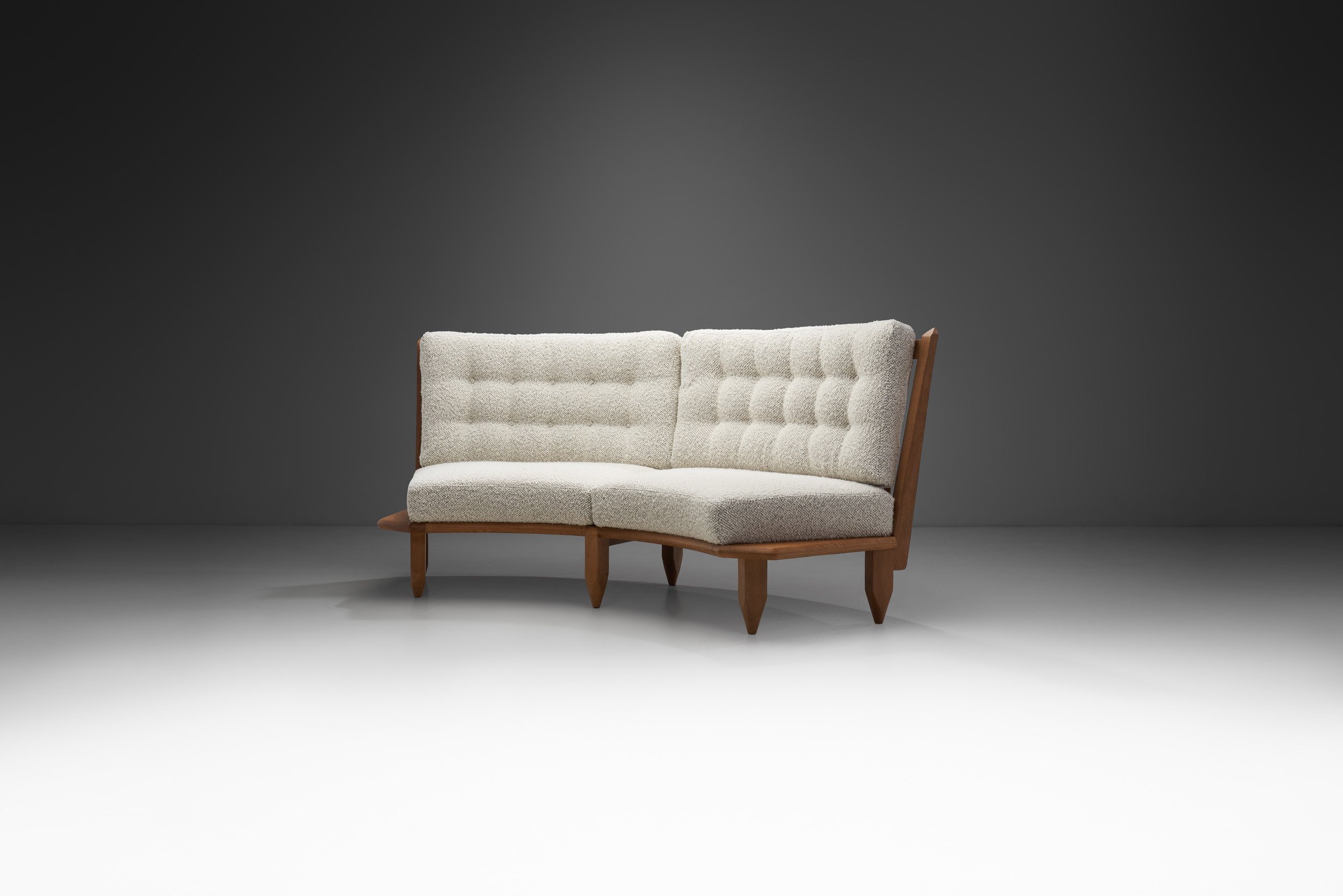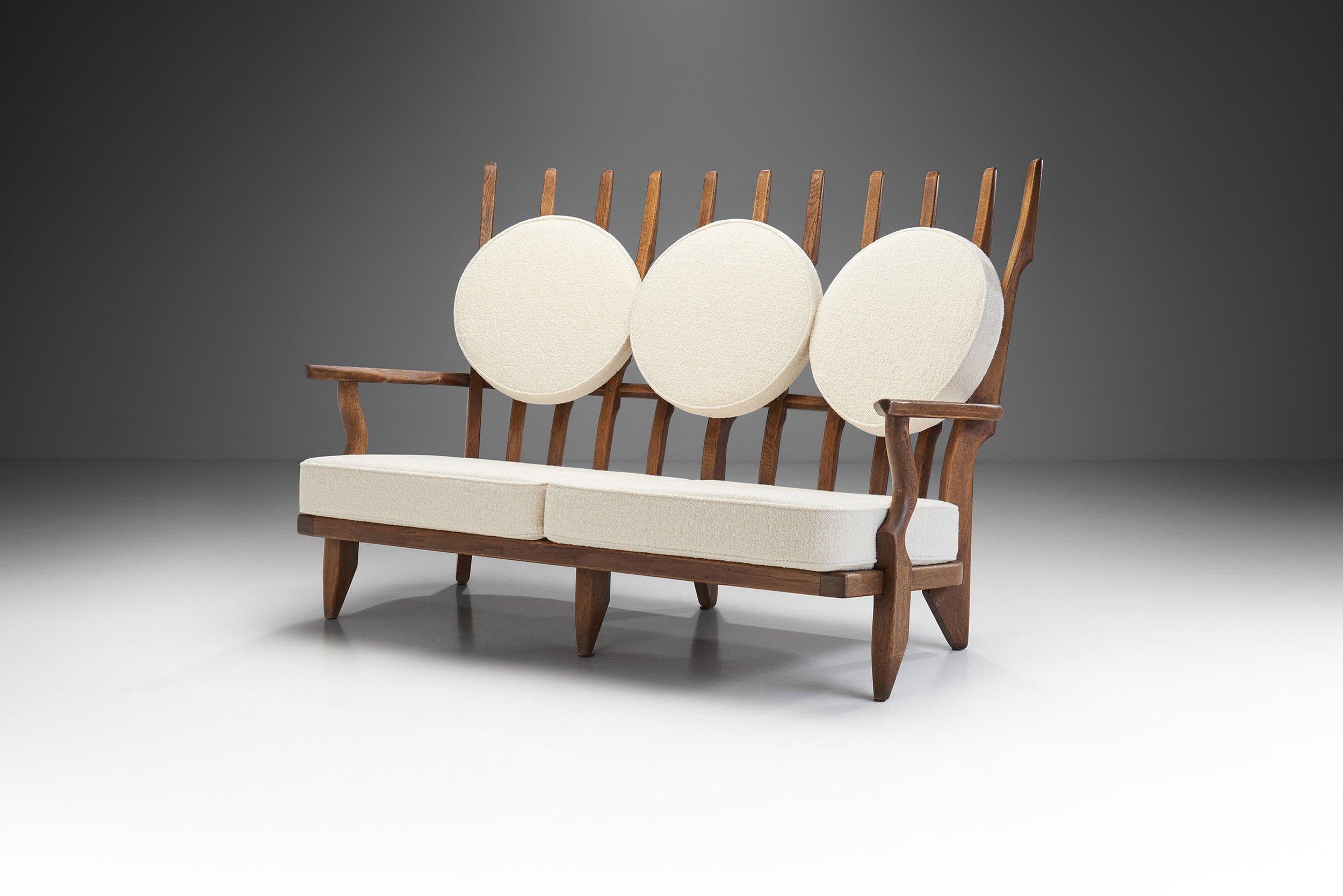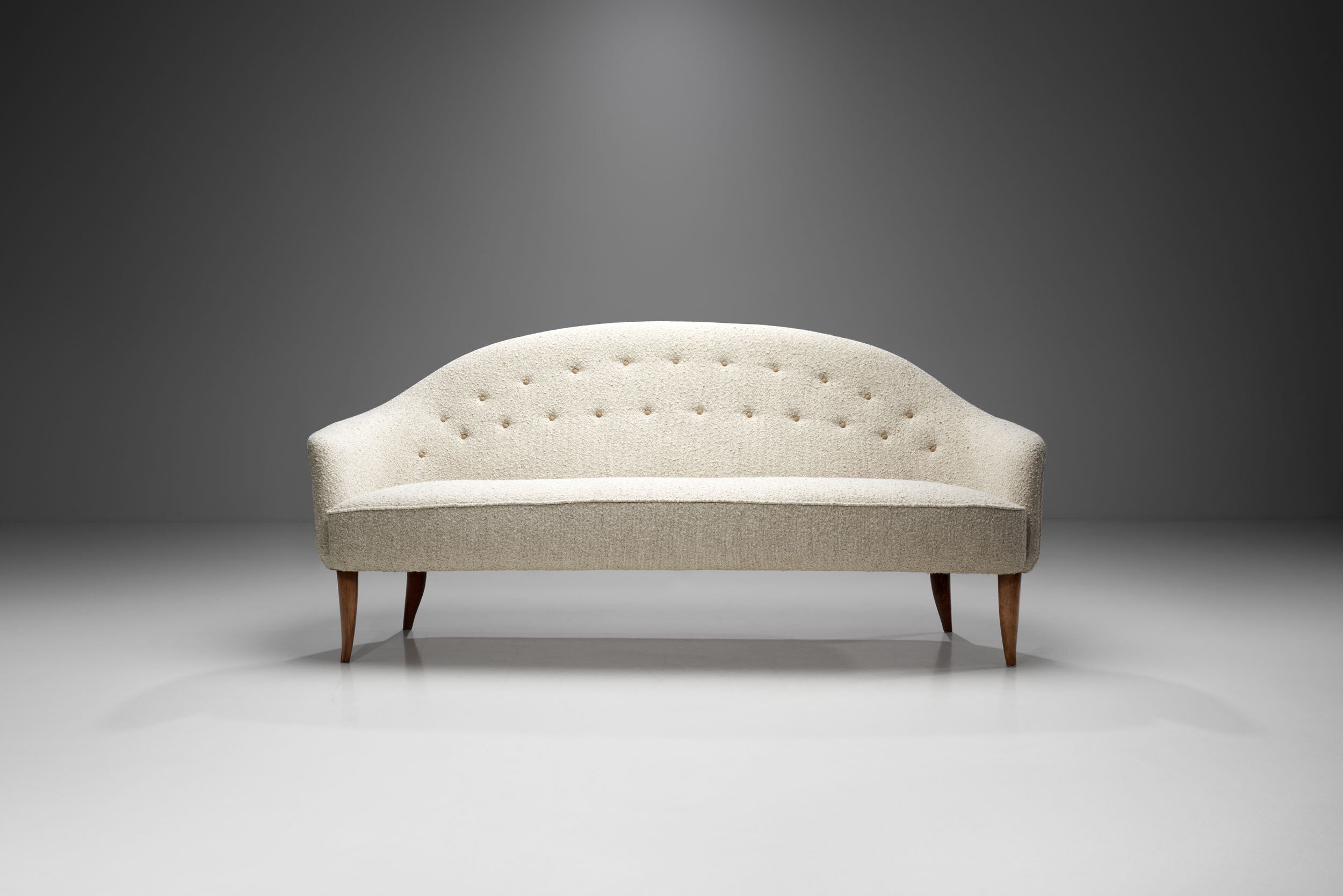Danish Cabinetmaker Three-Seater Sofa, Denmark ca 1950s (sold)













Danish Cabinetmaker Three-Seater Sofa, Denmark ca 1950s (sold)
This beautiful Danish three-seater sofa recalls the peak of Danish Mid-Century Modern design. Thanks to its curved shape, this three-seater is exceptionally cosy and elegant.
The visual appearance of this sofa is not the only thing that echoes Danish design, but also the exquisite craftsmanship. Many of the well-known Danish architects of the era felt the urge to try their hand at three-seater sofas, adhering to the period’s streamlined modernism. In combination with the unadorned styles of mid-century design, this sofa brings together the best attributes of the era.
The short, stained wood legs add that modern, organic feel, balancing out the voluptuous profile of the sofa. The front legs differ from the back ones, adding visual interest, while the masterful sense of proportions, the curved back and the soft upholstery guarantee functionality and comfort. This sofa has been reupholstered in a premium light bouclé fabric, accentuating the wooden legs and the luxurious feel and look of this three-seater sofa.
SOLD
Condition:
In good vintage condition. Wear consistent with age and use. The sofa has recently been reupholstered in a premium bouclé fabric.
Dimensions:
69.29 in W x 41.53 in D x 29.13 in H; Seat height 17.71 in
176 cm W x 105,5 cm D x 74 cm H; Seat height 45 cm
About the designer:
This Danish-made sofa reflects the core traditions and ideals of Danish design. Mid-century pieces such as this sofa were of great design, using fantastic wood like teak or beech. The era was the heyday of the production by master craftsmen.
Mid-century Danish design is world famous for the partnership between designer and manufacturer, resulting in ground-breaking creations. The Danish design idiom was centred on warm woods, quality fabrics and gentle yet robust support for the spine - qualities that engender contentment and well-being, a defining characteristic of Danish culture. The “Great Danes” believed furniture should be shorn of aesthetic detail and be an amalgam of form and function.
A master cabinet-maker is not a carpenter, as this was a rare breed of craftsman who had to be recognised by the Danish government after several years of toiling at his craft, as well as having to ace gruelling design competitions before becoming a master cabinet-maker. Since Denmark was a special instance of tempered industrialization, it managed to preserve sound traditions and continue to safeguard values of craftsmanship, materiality and usability.
Today, Danish furniture is sought after by collectors for classic looks, storied designs and solid quality, works that are truly soulful and timeless. ~H.












